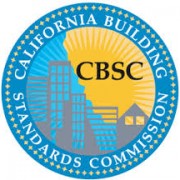When determining the minimum number of required accessible parking spaces for a new apartment or condominium project, the Building Code and Fair Housing Act (FHA) requirements can vary. Recognizing the differences in their requirements is important.
The Fair Housing Act (FHA) and Accessible Parking
When attempting to comply with the Fair Housing Act, the first thing to determine is which “safe harbor” or “equivalent standard” will be utilized to comply with design and construction requirements of the Fair Housing Act. While there are different “safe harbors” and a variety of strategies for employing them, for the purposes of discussing accessible parking within this blog post, the chosen “safe harbor” will be the Fair Housing Act Design Manual (FHADM). The FHADM is commonly used because it offers the Department of Housing and Urban Development’s (HUD’s) clarifications of the Fair Housing Act requirements as found in the FHA Guidelines.
It is conceivable that for a multi-family residential project, an entity could choose a FHA “safe harbor” such as the 2003 or 2006 editions of the International Building Code (IBC) or the 2012 IBC as a “recognized, comparable, objective standard” for compliance with the FHA. Using these editions of the IBC would result in accessible parking requirements that would closely emulate, if not directly match those found in the applicable building code. However, using these editions of the IBC for compliance with FHA could come with unintended consequences and requirements that greatly exceed those found in other FHA “safe harbors”.
Per the FHADM, the minimum number of required accessible parking spaces is based on the number of “covered dwelling units” (i.e., dwelling units that are required to comply with the FHA). The number of “covered dwelling units” within a project can vary, depending upon a variety of factors. To learn more about how many apartment units in a project must comply with FHA, go here. This minimum number of required accessible parking spaces required by the FHADM is 2% (but not less than one stall) of the “covered dwelling units”.
The International Building Code (IBC) and Accessible Parking
Many Cities and States us an edition (2009, 2012, etc.) of the the International Building Code (IBC), often with amendments. For the purposes of this blog post, references to the IBC will be to the 2012 edition, without amendments.
Per the 2012 IBC, apartments and condos are classified as occupancy Group R-2. Also per the IBC, the minimum number of required accessible parking spaces for Group R-2 is based on the number of parking spaces provided for the R-2 occupancy. This minimum number of required accessible parking spaces is 2% (but not less than one stall) of each type of parking space provided for the R-2 occupancy.
Accessible Parking; FHADM vs. IBC
As you can see, both the FHADM and the IBC base their number of minimum required accessible parking spaces on different criteria; “covered” units for FHADM and parking spaces for IBC. In general, where at least one parking space has been provided for every unit in a project, the IBC generally will require a minimum number of accessible parking spaces that is equal to or greater than that required by the FHADM.
This is even more so the case for projects where there may be units that are not required to comply with the FHA.
Example: In new, two or three story apartment complexes without elevators, the upper floors would generally be exempt from FHA requirements. For this situation, only the ground floor units would be utilized in determining the FHADM requirements for the minimum number of required accessible parking spaces.
A New Trend in Accessible Parking for Residential Projects
While in general, the IBC often requires a minimum number of accessible parking spaces that exceeds that required by the FHADM, there are situations where this condition is reversed and the FHADM may require more than that of the IBC.
Multi-family residential projects that rely on modes of transportation other than a car, such as bus, train, bicycle, or walking may have less parking for a project. For some of these projects the overall number of provided parking stalls for residential parking may be less than 1 stall per unit. In multi-family residential projects where every unit may conceivably be a “covered unit” (such as in a high-rise building with elevators) this could result in the FHADM requiring at a minimum, more accessible parking spaces than that of the IBC.
Example: 23 story high-rise building, elevator access to all units, 400 residential units, 250 parking stalls provided in a multi-level, below-grade parking garage
Per IBC; minimum required accessible parking spaces = 2% x 250 parking spaces = 5 accessible parking spaces
Per FHADM; minimum required accessible parking spaces = 2% x 400 residential units = 8 accessible parking spaces
Summary
When determining the minimum number of required accessible parking spaces for the residential portion of a new apartment or condominium project, care should be exercised when determining compliance with FHA and Building Code Requirements. The FHA and Building Code requirements for determining the minimum number of required accessible parking spaces can vary, based on a number of factors. Depending upon these factors, it is conceivable that the FHA requirements may end up being more stringent than those of the Building Code, or vice versa. Being aware of the conditions where this may occur, is important.



